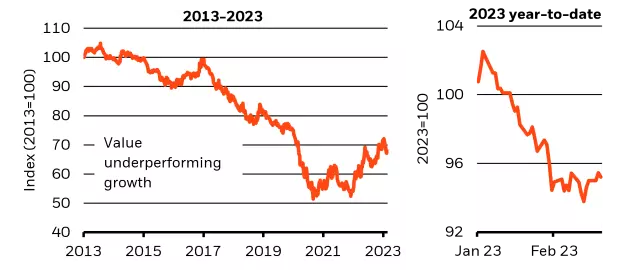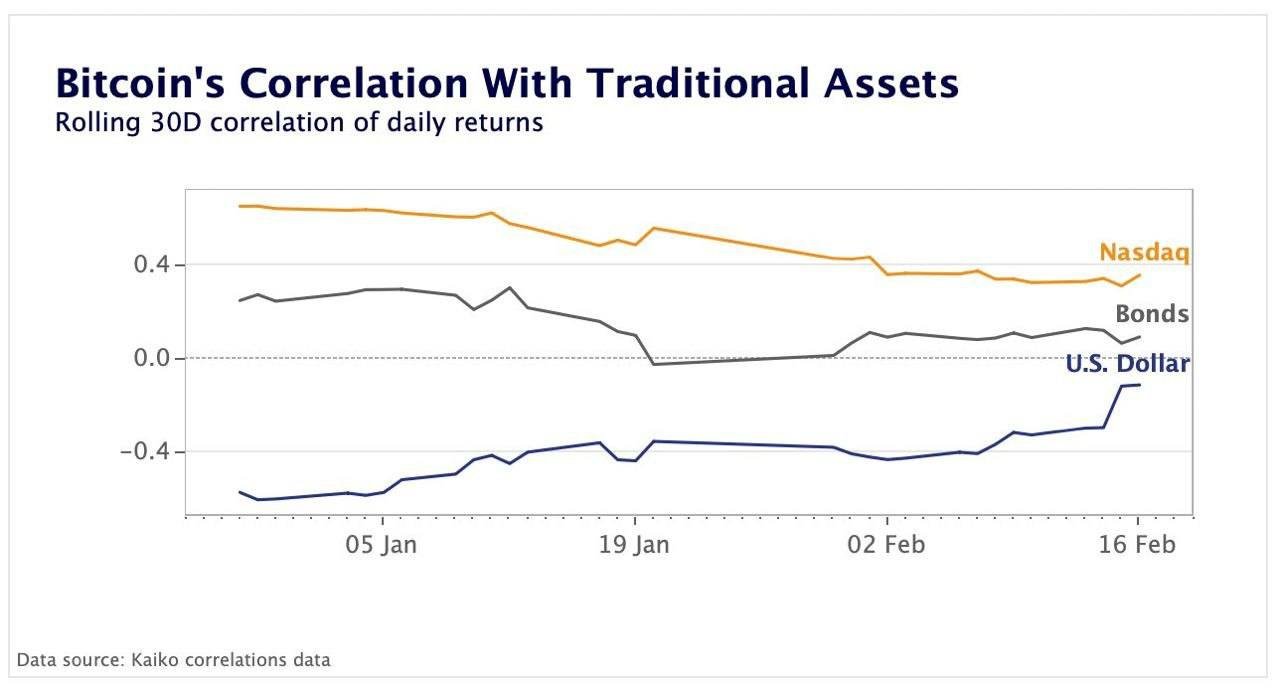Value Stocks Likely to Outperform Growth in New Macro Regime
TSLA
-1.43%
Add to/Remove from Watchlist
Add to Watchlist
Add Position
Position added successfully to:
Please name your holdings portfolio
Type:
BUY
SELL
Date:
Amount:
Price
Point Value:
Leverage:
1:1
1:10
1:25
1:50
1:100
1:200
1:400
1:500
1:1000
Commission:
Create New Watchlist
Create
Create a new holdings portfolio
Add
Create
+ Add another position
Close
BTC/USD
-1.63%
Add to/Remove from Watchlist
Add to Watchlist
Add Position
Position added successfully to:
Please name your holdings portfolio
Type:
BUY
SELL
Date:
Amount:
Price
Point Value:
Leverage:
1:1
1:10
1:25
1:50
1:100
1:200
1:400
1:500
1:1000
Commission:
Create New Watchlist
Create
Create a new holdings portfolio
Add
Create
+ Add another position
Close
US2US…
+-0.89%
Add to/Remove from Watchlist
Add to Watchlist
Add Position
Position added successfully to:
Please name your holdings portfolio
Type:
BUY
SELL
Date:
Amount:
Price
Point Value:
Leverage:
1:1
1:10
1:25
1:50
1:100
1:200
1:400
1:500
1:1000
Commission:
Create New Watchlist
Create
Create a new holdings portfolio
Add
Create
+ Add another position
Close
The Federal Open Market Committee (FOMC) will meet later in March to decide on the interest rate question for the US economy. With almost zero expectation of rate cuts this year, what does that mean for investors’ stock portfolios?
BlackRock’s weekly report sheds some light on which types of stocks are likely to prevail in the current macro regime.
Key Differences Between Value and Growth Stocks
Typically, growth stocks represent companies with high price-to-earnings ratios yet to generate consistent profits. One should look no further than Tesla (NASDAQ:TSLA) to see how such expectations play out. Yesterday, TSLA shares were up 92% YTD ahead of Investor Day.
However, since Tesla’s profits have become more consistent, viewing TSLA as a hybrid between growth and value has become more common. The latter may grow slower than growth stocks, but they tend to outperform growth stocks in a macro landscape when the interest rate is rising.
Value stocks have lower price-to-earnings ratios, consistent profits, and higher dividend yields. As such, they are perceived as undervalued and more resistant to shifting macroeconomic winds.
What Exactly Is the Current Macro Regime?
Even though TSLA stock is coming into hybrid mode, the growth part still weighs heavily. In 2022, we saw this in action when the Federal Reserve started interest rate hikes. Tesla’s annual return took a negative dive, at -65%, which is in stark contrast to Tesla’s performance in near-zero interest environments in 2020 (+743%) and 2021 (+49%).
But with TSLA up by +85% year-to-date, does the same macro regime apply?
In its weekly report, BlackRock used the Russell 1000 indicator to chart the last decade related to value vs. growth performance. This stock market index measures the performance of the largest (by market cap) 1,000 publicly traded companies in the US.
 Value-Growth CorrelationUS Russell 1000 Value total return index divided by the US Russell 1000 Growth total return index. Predictably, the near-zero interest rate environment benefited growth stocks.
Value-Growth CorrelationUS Russell 1000 Value total return index divided by the US Russell 1000 Growth total return index. Predictably, the near-zero interest rate environment benefited growth stocks.
Since mid-2022, when the Fed started aggressively combating inflation with rate hikes, this trend shifted in favor of value stocks. However, year-to-date, the trend reversed. BlackRock attributes this to a new narrative taking hold, one that counts on Fed rate cuts.
But with PCE running hotter than expected, that narrative seems less viable now. At the same time as inflation looks to be a sticker, spurring more hikes, this also leads to a steeper yield curve, as projected by the Congressional Budget Office (CBO).
 Interest Rates (10-Year Note Vs. Fed Funds Rate)
Interest Rates (10-Year Note Vs. Fed Funds Rate)
As a gap between short-term and long-term interest rates increases, a steep yield curve signals economic slowdown, i.e., recession. However, this steepening typically occurs in anticipation of a recession before the actual economic downturn. BlackRock sees this combination as a positive outlook for value stocks because:
- Inflation bites the future cash flow of companies, negatively impacting growth stocks that rely on earnings growth. In contrast, value companies are less affected by inflation, as they have more consistent earnings.
- A steep yield curve places long-term interest rates above short-term interest rates, which benefits value stocks with higher dividend yields, and is preferred by investors as such.
Although value stocks historically underperform when heading into recession, this atypical macro environment, expressed by a steep yield curve, would give value companies an extra edge. After all, the recession has been telegraphed well in advance, giving them room to prepare.
In this light, BlackRock sees the energy sector as the optimal combination of value and quality. BlackRock still expects a mild recession, which could be interpreted as the Fed’s ‘soft landing.’
Where Do Digital Assets Fit?
Investors still perceive digital assets as high-risk, high-reward investments. Applied to stocks, this would be akin to tech growth stocks. Indeed, the tech-heavy Nasdaq index has historically shown the highest correlation to Bitcoin. However, Bitcoin’s correlation declined against traditional assets after this year’s rally.
 Bitcoin Correlation With Traditional Assets
Bitcoin Correlation With Traditional Assets
Bitcoin’s relationship to the US Dollar Index has been historically inverse or negatively correlated. As a currency debasement hedge, Bitcoin price typically decreases when DXY increases due to rising interest rates. When the PCE report came hot, DXY went up as the ‘Fed pivot’ narrative lost steam.
The interplay between DXY, stocks, and Bitcoin has been well-established on a longer time scale.
But now that the SEC Chair Gary Gensler announced Bitcoin as the only cryptocurrency to be considered a commodity, a new dynamic may come into play. One that leads to further divergence between Bitcoin, altcoins, and stocks.
***
Disclaimer:



